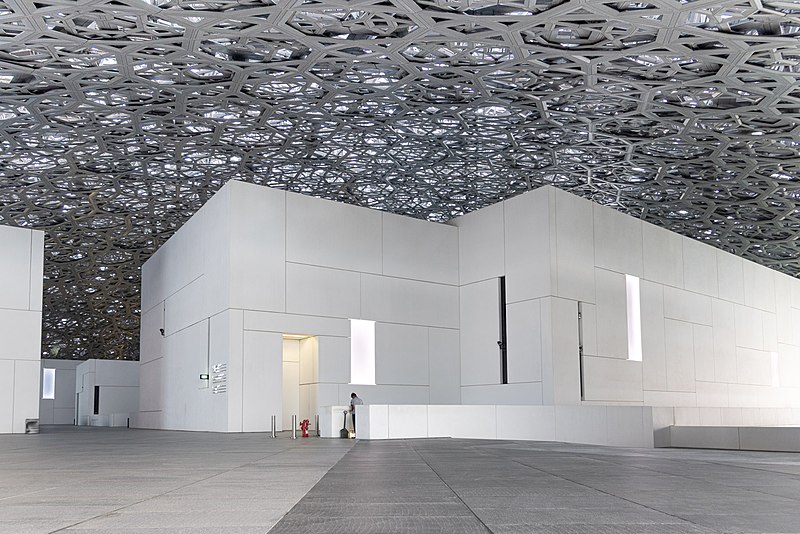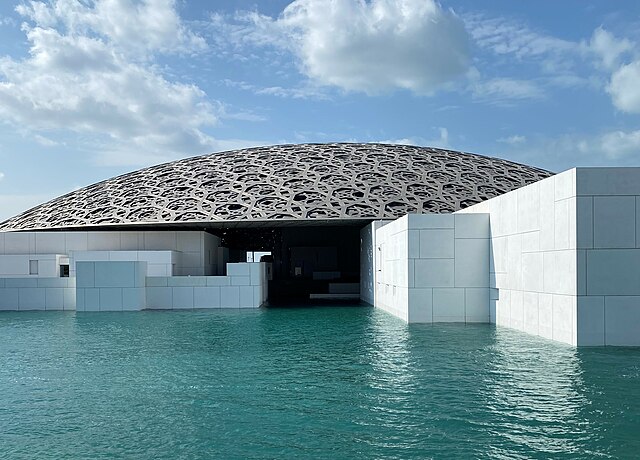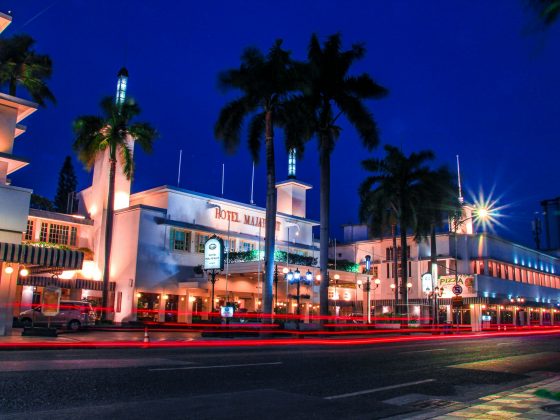The Louvre Abu Dhabi stands as a cultural marvel on Saadiyat Island, seamlessly blending art, history, and architecture to create a unique and transcendent museum experience. Opened to the public in November 2017, this extraordinary institution is the result of a groundbreaking collaboration between the United Arab Emirates and France. The Louvre Abu Dhabi is not merely a satellite extension of the Louvre in Paris; rather, it has forged its own identity, housing a diverse collection that spans millennia and civilizations.

Masterpieces Within
Covering a vast expanse of 9,200 square meters, the galleries at the Louvre Abu Dhabi offer an immersive exploration, comprising a Permanent Gallery and a Temporary Gallery enriched by notable loans from renowned French museums such as Musee du Louvre, Musee d’Orsay, and Centre Pompidou. Within this space, the museum skillfully presents the juxtaposition of various civilizations, illustrating the shared human experience with a focus that transcends geographical, national, and historical boundaries.
The Architecture
Drawing inspiration from the region’s architectural heritage and its distinctive location, where the Arabian sky converges with the sands of Saadiyat Island and the waters of the Arabian Gulf, the building captivates with its interplay of water and reflected light. Recognized as one of the contemporary urban marvels globally, the museum is not merely the Arab world’s inaugural universal museum but also a poignant symbol of the United Arab Emirates’ aspirations and accomplishments – beating out the luxuries of many 5 star hotels in Abu Dhabi such as the excellent Anantara Eastern Mangroves Abu Dhabi.
Its Inception
Established through an intergovernmental agreement inked on March 6, 2007, between France and the United Arab Emirates, the Louvre Abu Dhabi proudly stands as the inaugural universal museum in the Arab world. The comprehensive agreement involved thirteen renowned French public cultural establishments operating under the Agence France-Muséums, including the Musée du Louvre, Centre Pompidou, Musée d’Orsay, Bibliothèque Nationale de France (BnF), Musée du Quai Branly, and others.
Features of Note
At the heart of Jean Nouvel’s visionary design for the Louvre Abu Dhabi is an expansive silvery dome, creating the illusion of weightlessness as it hovers above the museum. Surprisingly, the dome, which weighs approximately 7,500 tons, rivals the weight of the iconic Eiffel Tower in Paris. Drawing inspiration from the cupola, a distinctive element in Arabic architecture, Nouvel’s intricate dome comprises 7,850 stars arranged in eight different layers, each with varying sizes and angles.











